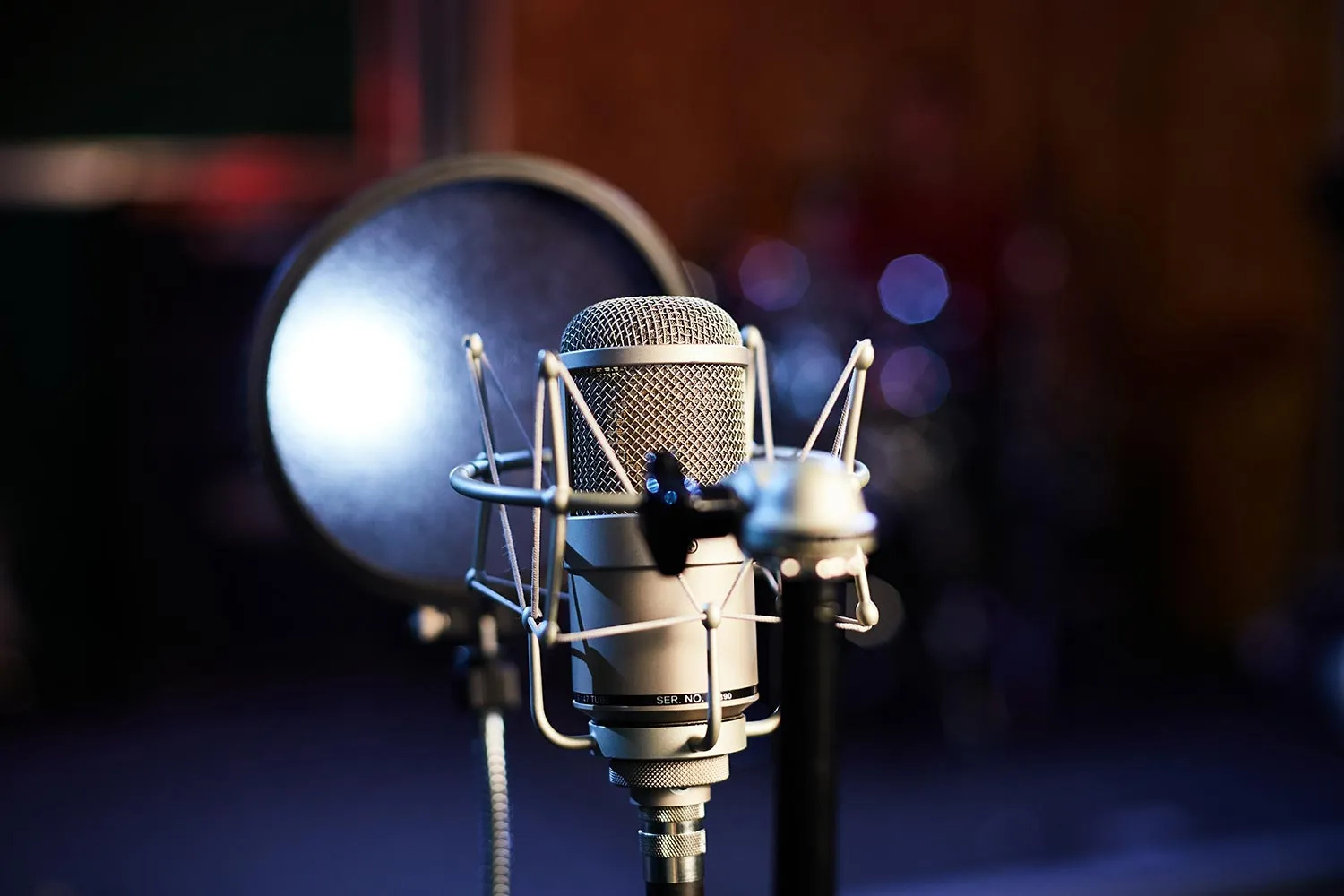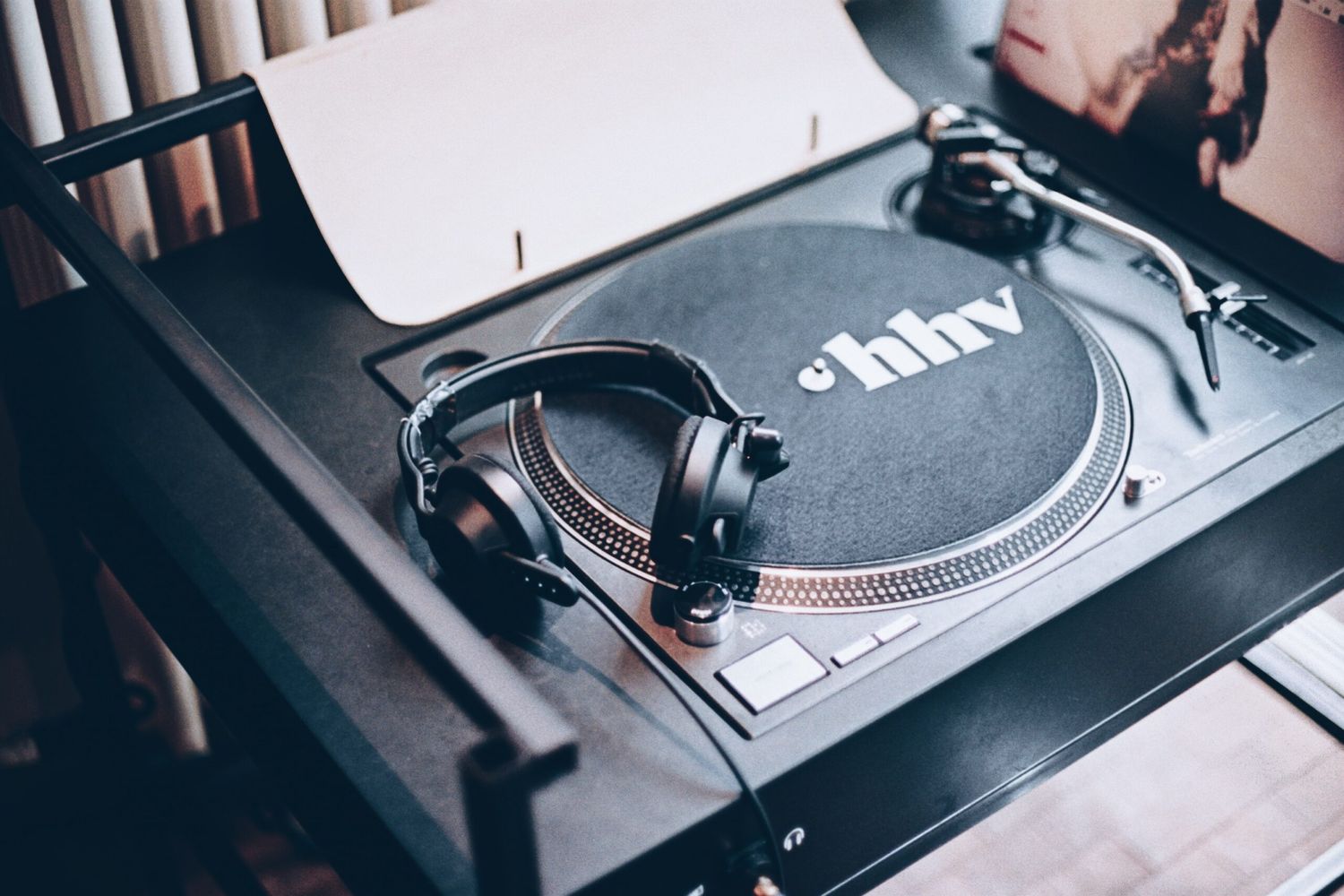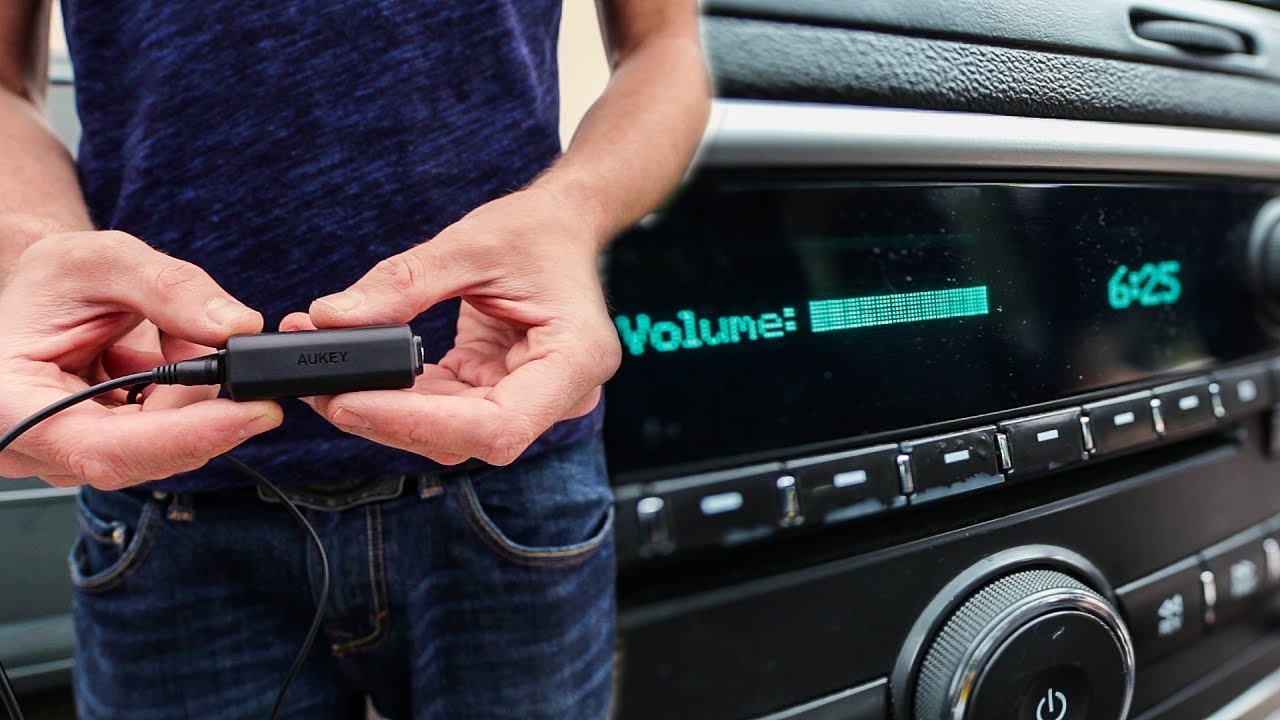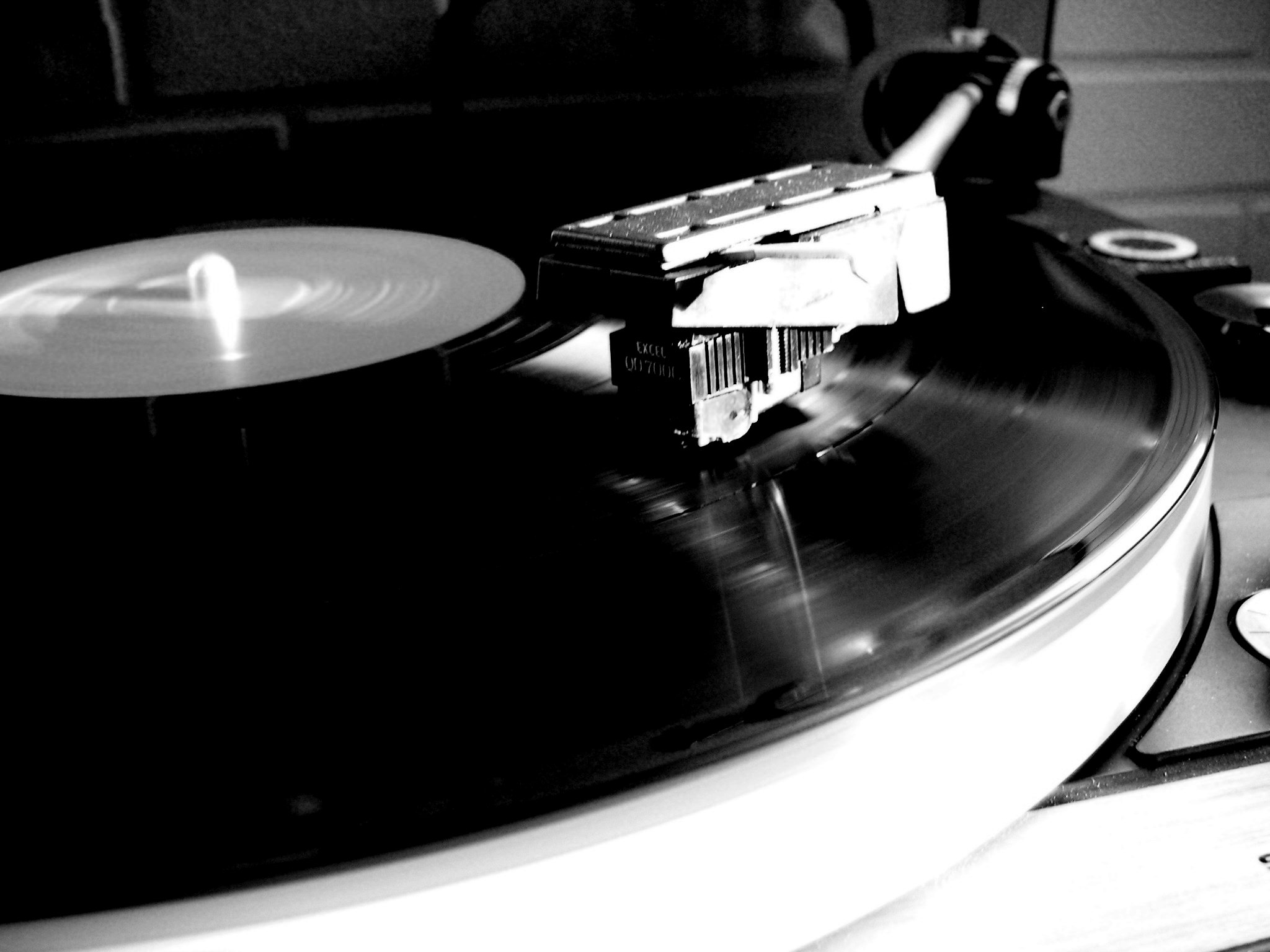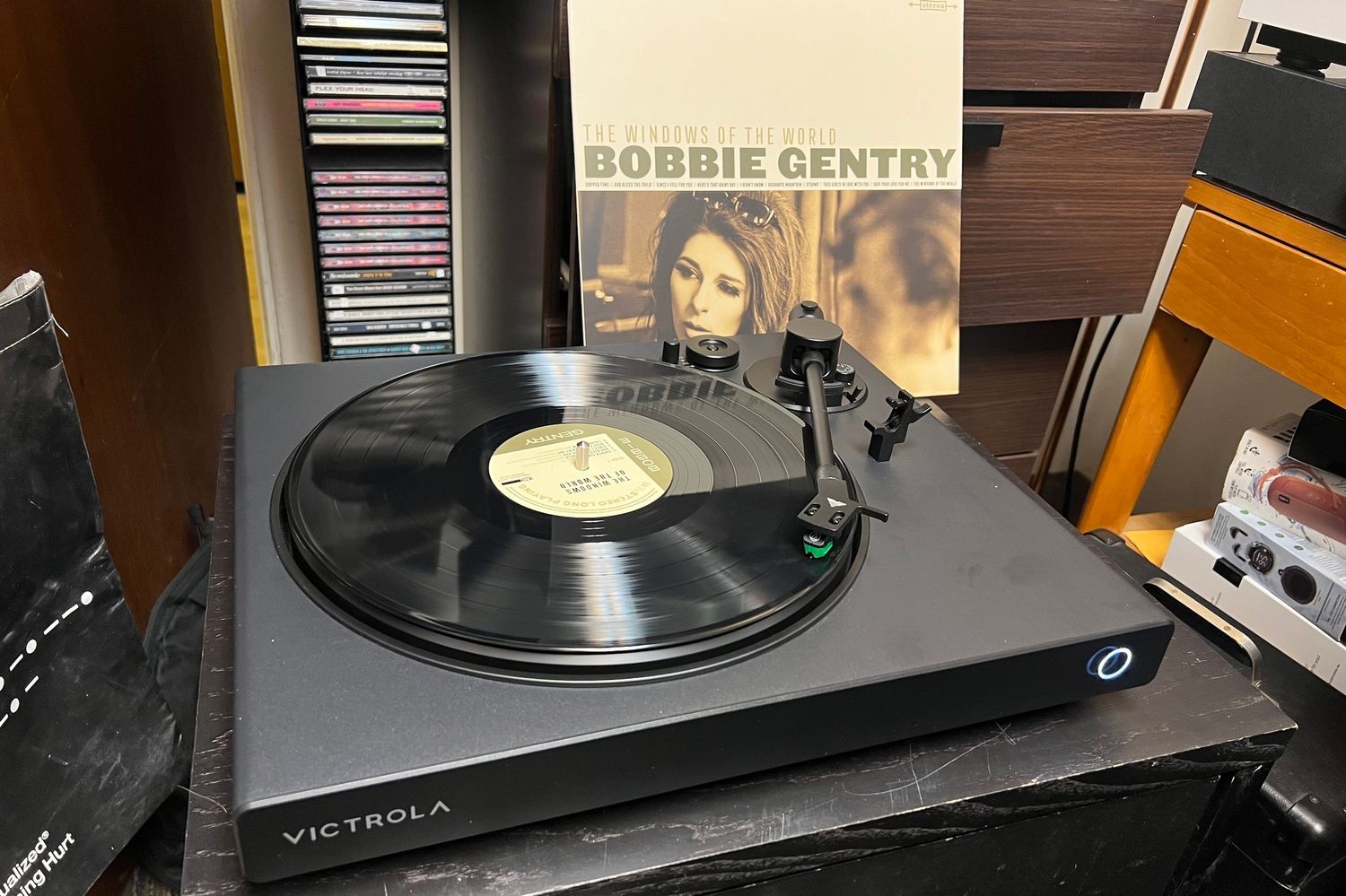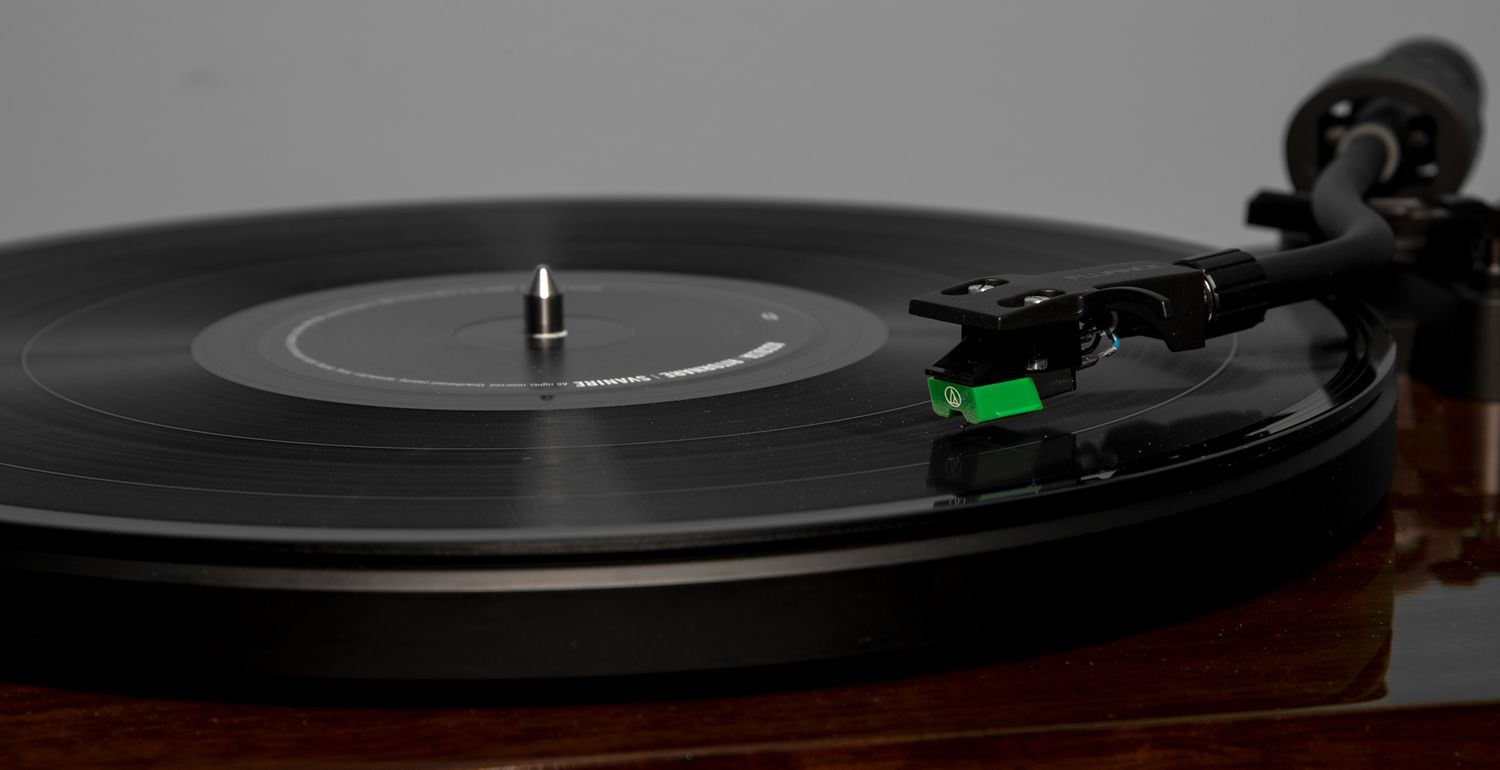Home>Devices & Equipment>Turntable>How Does Static Affect Sound Quality On A Turntable
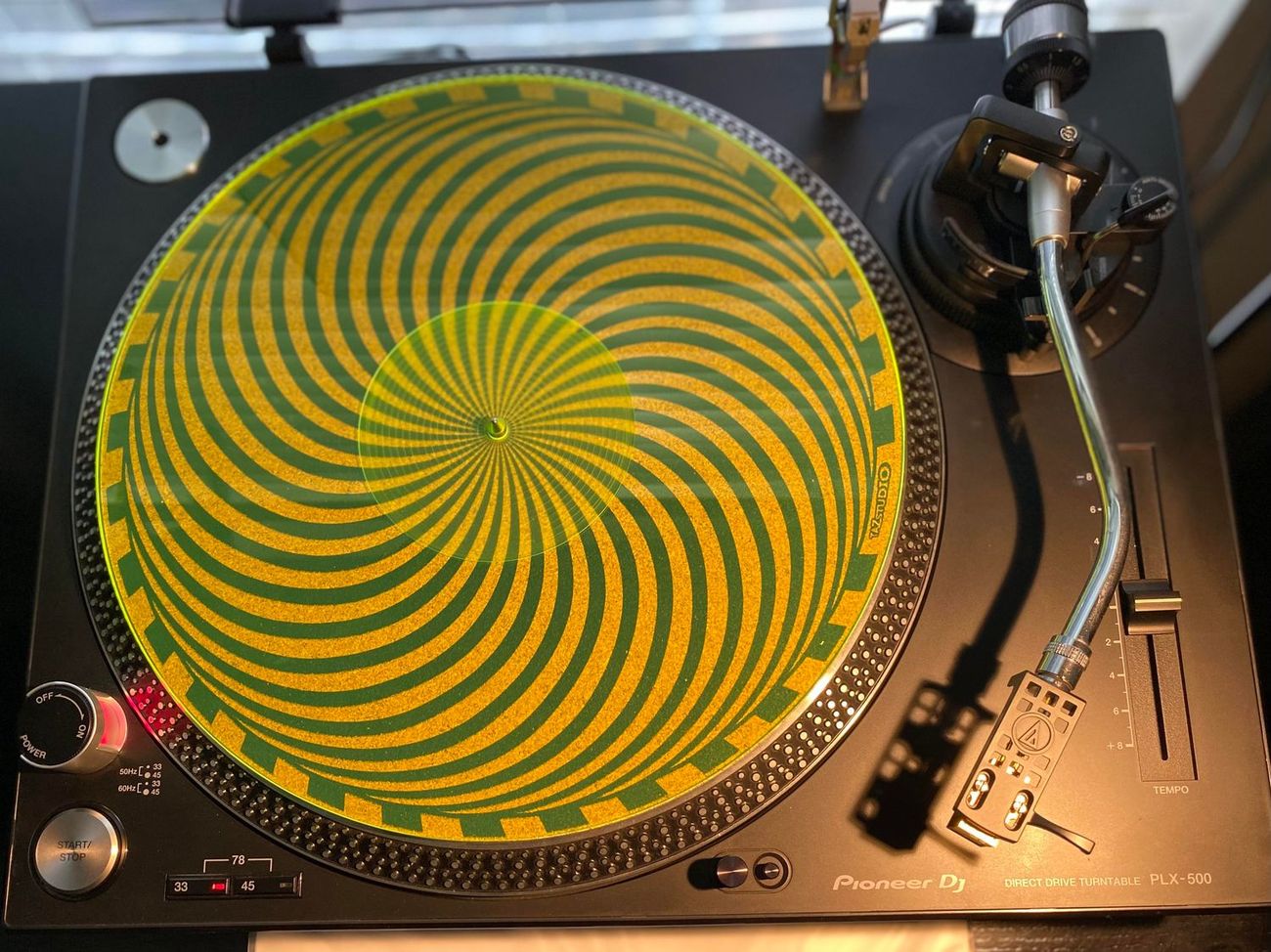

Turntable
How Does Static Affect Sound Quality On A Turntable
Modified: January 22, 2024
Discover how static can impact the sound quality of your turntable and learn ways to minimize interference for optimal audio performance.
(Many of the links in this article redirect to a specific reviewed product. Your purchase of these products through affiliate links helps to generate commission for AudioLover.com, at no extra cost. Learn more)
Table of Contents
Introduction
Welcome to the world of turntables, where the magic of vinyl records comes to life. Turntables have long been revered for their rich, warm sound that can transport listeners to a bygone era. However, just like any other audio equipment, turntables are not immune to certain challenges that can affect sound quality. One such challenge is the presence of static.
Static, in the context of turntables, refers to the build-up of electrical charges on the surface of records and other components. It can be caused by a variety of factors, including environmental conditions, improper grounding, and the materials used in the construction of both the turntable and the records themselves. This static electricity can interfere with the delicate process of reproducing sound and impact the overall audio experience.
In this article, we will delve deeper into the world of turntable static and how it can affect sound quality. We will explore the factors that contribute to static, the common issues and symptoms associated with it, and most importantly, effective ways to reduce and mitigate its impact. By understanding and addressing static-related challenges, you can enhance the sound quality and overall enjoyment of your turntable.
It’s important to note that while static can be a frustrating issue for turntable enthusiasts, it is not a problem unique to turntables. Many audio and electronic devices can be affected by static electricity. However, due to the delicate nature of vinyl records and the sensitive cartridge systems of turntables, static can have a more significant impact on their performance.
So, let’s embark on this journey to explore the world of turntable static and gain insights into how we can minimize its effects. By doing so, we can ensure that our turntables deliver the pristine audio quality that vinyl enthusiasts crave.
Understanding Static
Before we dive into the impact of static on sound quality, it’s essential to have a clear understanding of what static actually is. In the context of turntables, static refers to the accumulation of electrical charges on the surface of records and other components. This buildup of static electricity can interfere with the delicate process of reproducing sound, resulting in various issues such as pops, crackles, and distortion.
Static electricity occurs when electrons are transferred between objects, creating an imbalance in charges. When a vinyl record spins on a turntable, friction between the stylus and the record’s surface can generate static electricity. Additionally, factors such as low humidity levels, synthetic materials, and inadequate grounding can exacerbate the problem.
Static electricity behaves in unpredictable ways and can impact the performance of a turntable in several ways. Firstly, it can attract dust and other particles to the surface of the record, causing physical interference with the stylus. When the stylus encounters these particles, it can create pops and crackles that disrupt the audio playback. Secondly, static electricity can cause the stylus to “stick” to the record, leading to skipping or distortion. Lastly, the electrical charges can interfere with the delicate electronic components of the turntable, affecting the signal path and degrading the overall sound quality.
Understanding the nature of static and its potential impact is crucial for effectively mitigating its effects. By taking proactive measures, we can minimize static-related issues and preserve the integrity of our vinyl listening experience.
Now that we have a basic understanding of static, let’s explore the specific ways in which it can affect sound quality on a turntable. By identifying these impacts, we can further appreciate the importance of tackling static-related challenges.
The Impact of Static on Sound Quality
Static can have a significant impact on the overall sound quality delivered by a turntable. It can introduce various distortions and disruptions that detract from the pure and immersive audio experience that vinyl enthusiasts seek. Let’s explore some of the key ways in which static can affect sound quality on a turntable.
- Pops and Crackles: One of the most common and noticeable effects of static is the presence of pops and crackles in the audio playback. As static attracts dust and other particles to the record’s surface, the stylus encounters these obstructions during playback, resulting in disruptive noises. These pops and crackles can be especially prominent during quiet passages or in between tracks, diminishing the clarity and enjoyment of the music.
- Distortion: Static electricity can cause the stylus to stick to the record, leading to distortion in the sound. When the stylus gets momentarily “stuck,” it can skip or jump, causing the music to sound warped or uneven. This distortion can be particularly frustrating when enjoying an album or track that requires smooth and consistent playback.
- Loss of Detail: Static interference can result in a loss of detail in the audio reproduction. The delicate grooves of a vinyl record contain a wealth of intricate musical information, and any disruption caused by static can result in the loss of this detail. This can diminish the richness and nuance of the sound, impacting the overall listening experience.
- Imbalance in Channel Separation: Static can also affect the channel separation of the audio playback. When the electrical charges disrupt the signal path, it can introduce imbalances between the left and right channels, causing a lack of spatial accuracy and balance in the stereo image. This can result in a loss of depth and immersion in the soundstage.
- Reduced Dynamics: The presence of static can contribute to a reduction in the dynamic range of the audio playback. Dynamic range refers to the contrast between the softest and loudest sounds in a recording. When static is present, it can introduce a layer of noise and interference, reducing the perceived dynamic range and diminishing the impact of soft and loud passages in the music.
These are just some of the ways in which static can impact sound quality on a turntable. The cumulative effect of these distortions and disruptions can significantly degrade the audio experience and hinder the enjoyment of vinyl records. It is therefore crucial to address static-related issues to preserve the fidelity and integrity of the music.
Factors Contributing to Static on Turntables
Static on turntables can be caused by various factors, some of which are inherent to the nature of vinyl records and turntable components, while others are influenced by environmental conditions and improper setup. Understanding these factors can help us identify the root causes of static buildup and take appropriate measures to mitigate its effects. Let’s explore the key factors that contribute to static on turntables.
- Vinyl Material: Vinyl records themselves can contribute to static buildup due to the materials used in their construction. Synthetic materials, such as PVC (polyvinyl chloride), are commonly used, and these materials are known to generate static electricity. Additionally, the manufacturing and storage process can also influence the level of static in records.
- Environmental Conditions: Humidity levels play a crucial role in static buildup. Low humidity can cause the air to be dry, leading to a higher likelihood of static. Dry air allows the exchange of electrons between objects and promotes the accumulation of static charges on surfaces, including records and turntable components. On the other hand, excessively high humidity levels can contribute to mold growth and damage records.
- Friction: Friction between the stylus and the record’s surface can generate static electricity. When the stylus comes into contact with the record, especially during playback, the friction caused by their interaction can lead to an accumulation of static charges. This is particularly true when the record has dust or other particles on its surface.
- Inadequate Grounding: Proper grounding is essential for dissipating static charges and maintaining a stable electrical environment. Inadequate grounding in the turntable or the audio system can contribute to the buildup of static electricity on various components, including the record, platter, and cartridge. This can result in disruptive noise and deteriorated sound quality.
- Suboptimal Cleaning: Dust and debris on the record’s surface can exacerbate static issues. If the record is not properly cleaned before playback, the stylus can encounter these particles, resulting in pops, crackles, and static-related distortions. Regular cleaning of records can help minimize static buildup and ensure optimal sound quality.
- Turntable Setup: The way a turntable is set up can also contribute to static. Scratched or dirty tonearms, loose connections, and poorly grounded turntable components can all contribute to static buildup. Proper alignment and calibration of the turntable, along with regular maintenance, can help minimize static-related issues.
By understanding these factors that contribute to static on turntables, we can take appropriate steps to minimize its effects. Addressing issues such as proper grounding, maintenance, and environmental control can significantly reduce static buildup and improve the overall sound quality of your turntable.
Common Static-related Issues and Symptoms
Static on turntables can manifest in various ways, causing a range of issues that can negatively impact the listening experience. Recognizing these common static-related issues and symptoms is crucial for troubleshooting and addressing static problems effectively. Let’s explore some of the most common issues and symptoms associated with static on turntables.
- Pops and Crackles: Pops and crackles are perhaps the most prevalent symptoms of static on turntables. These disruptive noises can occur intermittently or consistently throughout the playback of a vinyl record. Static buildup attracts dust and debris to the record’s surface, causing the stylus to encounter these particles and resulting in audible pops and crackles in the audio reproduction.
- Stylus Skipping or Jumping: Static can cause the stylus to stick to the record, leading to skipping or jumping during playback. When the stylus encounters a static charge on the surface, it can momentarily “hang” or get stuck. This can cause the stylus to skip ahead or jump to a different part of the record, disrupting the continuity of the music.
- Distorted Sound: Static interference can result in distorted sound on a turntable. The electrical charges generated by static can disrupt the signal path, causing distortions in the audio playback. This can manifest as a warbled or uneven sound, with certain frequencies being exaggerated or diminished. Distortion can significantly impact the clarity and fidelity of the music.
- Loss of Audio Detail: Excessive static buildup can lead to a loss of detail in the audio reproduction. As the stylus encounters disruptions caused by static, it may miss or misinterpret subtle details in the record’s grooves. This can result in a reduction in the overall resolution and nuance of the music, making it harder to discern fine details and intricacies in the sound.
- Inconsistent Channel Separation: Static can interfere with the delicate balance of channel separation in stereo systems. The electrical charges generated by static can introduce imbalances in the left and right channels, leading to a lack of spatial accuracy and balance in the stereo image. This can cause the soundstage to feel skewed or uneven.
- Increased Background Noise: Static buildup can introduce a layer of background noise to the audio playback. This noise can manifest as a constant hiss or low-level crackling that is present even during silent passages. The presence of excessive background noise can mask subtle details and diminish the overall dynamic range of the music.
Recognizing these common static-related issues and symptoms is the first step in effectively addressing static on turntables. By identifying and troubleshooting these problems, you can take appropriate measures to minimize static-related disruptions and enhance the overall sound quality of your turntable.
Effective Ways to Reduce Static on Turntables
Static buildup on turntables can be a frustrating issue for vinyl enthusiasts, but there are several effective ways to reduce and mitigate its effects. By implementing these strategies, you can significantly improve the overall sound quality and enjoyment of your turntable. Let’s explore some of the most effective ways to reduce static on turntables.
- Control the Environment: Maintaining optimal environmental conditions can help minimize static buildup. Aim for a relative humidity level of around 40-50% to prevent excessively dry air. Use a hygrometer to monitor humidity levels and consider using a humidifier or dehumidifier to regulate moisture if necessary.
- Proper Grounding: Ensure that your turntable and audio system are properly grounded. Proper grounding helps to dissipate static charges and maintain a stable electrical environment. Make sure that all connections and grounding wires are secure and free from any corrosion or damage.
- Clean Records: Regularly clean your vinyl records to minimize static buildup. Use a carbon fiber brush or a cleaning solution specifically designed for vinyl records to remove dust, debris, and static. Cleaning records before each playback session can significantly reduce the likelihood of static-related issues.
- Anti-static Solutions: Consider using anti-static solutions and devices to reduce static buildup. Anti-static record sleeves, inner sleeves, and mats can help dissipate static charges and prevent static transfer to the record’s surface. Spraying an anti-static solution on the record before playback can also help minimize static-related issues.
- Record Mats: Using an anti-static record mat can help minimize static buildup. These mats, typically made from conductive materials, create a pathway for static charges to dissipate, reducing the likelihood of static interfering with the stylus. Additionally, some mats also provide better isolation and damping, further enhancing sound quality.
- Proper Handling: When handling vinyl records, avoid touching the playing surface as much as possible. Hold the records by their edges or use record handling gloves to prevent the transfer of oils and dirt, which can attract static charges. Minimizing physical contact with the record’s surface can help reduce the potential for static buildup.
- Avoid Synthetic Materials: Synthetic materials, such as polyester or nylon, can contribute to static buildup. Avoid using synthetic materials when cleaning records or storing them. Instead, opt for natural materials like cotton or microfiber, which are less likely to generate static electricity.
- Static Discharge: Before playing a record, discharge any static electricity from your body by touching a grounded metal object. This can help prevent the transfer of static charges to the record during handling and minimize the likelihood of static-related issues.
By implementing these effective strategies, you can significantly reduce static on your turntable and enhance the overall sound quality and enjoyment of your vinyl records. Experiment with different methods and combinations to find the best approach that works for your specific setup and environment.
Proper Maintenance and Care for Minimizing Static
In addition to implementing strategies to reduce static on turntables, proper maintenance and care are key to minimizing static-related issues. By following these practices, you can ensure the optimal performance of your turntable and minimize the effects of static on sound quality. Let’s explore some essential maintenance and care tips for minimizing static on turntables.
- Regular Cleaning: Properly clean the various components of your turntable on a regular basis. This includes cleaning the stylus with a stylus brush or cleaning solution, ensuring the record mat and platter are free from dust and debris, and wiping down the surfaces of the turntable with a soft microfiber cloth. Regular cleaning helps to maintain optimal contact between the stylus and the record, reducing the accumulation of static and minimizing static-related issues.
- Use a Dust Cover: When not in use, keep your turntable covered with a dust cover or a record sleeve to protect it from dust and other particles. Dust accumulation can exacerbate static buildup and introduce unwanted noise to the audio playback. Using a dust cover helps to maintain a clean and dust-free environment for your turntable.
- Proper Storage: Store your vinyl records in a clean and dry environment. Use record sleeves to protect them from dust and static buildup. Avoid stacking records horizontally on top of each other, as this can create friction and increase the potential for static charges. Vertical storage or using record dividers can help minimize contact and reduce the likelihood of static-related issues.
- Static-free Turntable Mat: Consider using a static-free turntable mat in place of the standard felt mat. These mats, made from alternative materials such as rubber or cork, can help dissipate static charges and prevent them from transferring to the record’s surface. They provide an additional layer of protection against static and can contribute to improved sound quality.
- Avoid Over-tightening: When mounting the cartridge and adjusting the tonearm, avoid over-tightening. Excessive pressure can cause stress on the components and increase the potential for static electricity. Follow the manufacturer’s guidelines for proper installation and ensure a secure but gentle fit.
- Avoid Frequent Changes: Minimize unnecessary changes of the turntable’s components, such as cartridges or stylus types. Frequent changes can introduce additional static buildup as the components come into contact with each other. If changes are necessary, handle everything with proper care and avoid touching the contact surfaces as much as possible.
- Keep Cables and Connections Clean: Inspect the cables and connections of your turntable regularly and clean them if necessary. Dust and debris can accumulate on the connectors and affect the electrical conductivity, leading to the potential for static-related issues. Use contact cleaner or a soft brush to clean the connectors and ensure a secure and clean connection.
- Professional Maintenance: Periodically, consider bringing your turntable to a professional technician for maintenance and servicing. They can perform tasks such as cleaning internal parts, checking and calibrating the tonearm, and ensuring proper grounding. Professional maintenance helps to keep your turntable in optimal condition and minimize static-related issues.
By following these maintenance and care tips, you can minimize static buildup and maintain the performance of your turntable. Regular cleaning, proper storage, and attention to detail will go a long way in reducing static-related issues and ensuring the best possible audio quality from your vinyl records.
Conclusion
Static can be a bothersome and frustrating challenge for turntable enthusiasts, but understanding its impact and implementing effective measures can greatly enhance the sound quality and overall enjoyment of your vinyl records. By addressing the factors that contribute to static, recognizing common static-related issues and symptoms, and implementing proper maintenance and care practices, you can minimize static buildup and its negative effects on sound quality.
Controlling the environmental conditions, ensuring proper grounding, and using anti-static solutions and devices are effective ways to reduce static on turntables. Regularly cleaning the records, avoiding synthetic materials, and implementing proper handling techniques also contribute to minimizing static-related disruptions. Additionally, following proper maintenance and care practices, such as regular cleaning of turntable components and using dust covers, can help preserve the optimal performance of your turntable and prevent static-related issues.
By taking a proactive approach to minimize static, you can enjoy the true beauty and fidelity of vinyl records. The rich and warm sound that turntables and vinyl records are known for can be fully appreciated when static-related issues are minimized. So, embrace the magic of vinyl and let the music transport you with its pure, immersive quality.
Remember, each turntable setup is unique, and it may require some experimentation and adjustments to find the most effective methods for reducing static. Whether you are a casual listener or a dedicated audiophile, the efforts you put into addressing static will be rewarded with a more enjoyable and satisfying vinyl listening experience.


